Seven innovative proposals seeking to rejuvenate the Chao Phraya Riverbanks were awarded accolades at the Designing Resilience in Asia (DRIA) 2018 international competition.
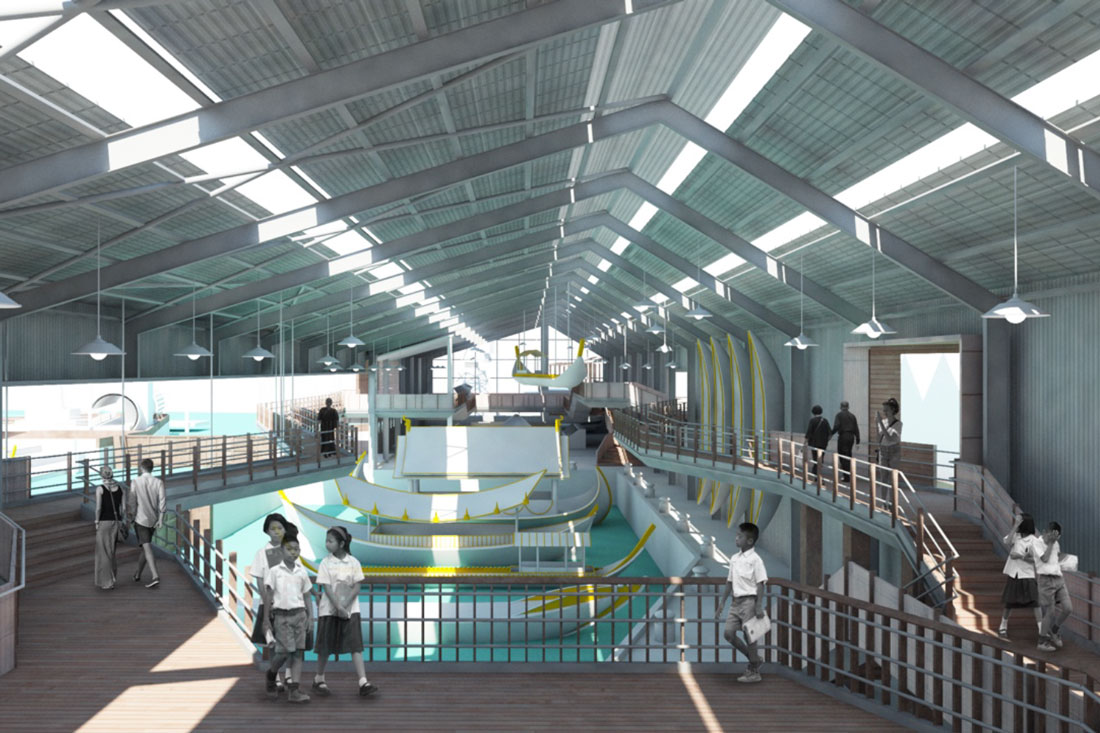
October 26th, 2018
Launched in 2014, Designing Resilience in Asia (DRIA) is a research programme on urban and architecture resilience initiated by the School of Design and Environment of the National University of Singapore (NUS-SDE).
DRIA aims to promote and foster research and discussion about ideas towards the resiliency of Asian cities responding to the effects caused by climate change. In 2015, DRIA launched an international symposium and design competition in Singapore that has since become an annual tradition.
Each year DRIA invites experts on resilience to share their insights in the symposium and students from an international pool of affiliated architectural schools to participate in the design competition.
The 2018 edition the international competition took the theme of Drowning By The Sea: Re-envisioning the Future of the Chao Phraya Riverfront to Mitigate and Adapt to Climate Change Effects.
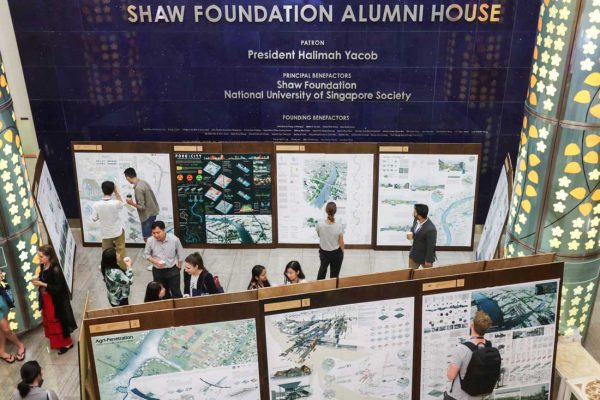
The DRIA 2018 Design Competition Exhibition
It invited schools to submit design proposals of revitalisation and transformation of Bangkok’s Chao Phraya riverfront. Bangkok has been suffering perennial flooding and land subsidence caused by climate change and rapid (and often unchecked) urbanisation.
Despite being fortified by walls, the riverbanks of Chao Phraya are some of the areas most severely affected during flooding episodes. Specific areas for intervention were determined by each participating team within a larger area specified by DRIA.
In addition to addressing the flooding and land subsidence, the proposal must also proactively address energy production and use, ecological health, sewage overflows and green shipping while taking into accounts the site’s existing urban tissues and other assets both tangible and intangible.
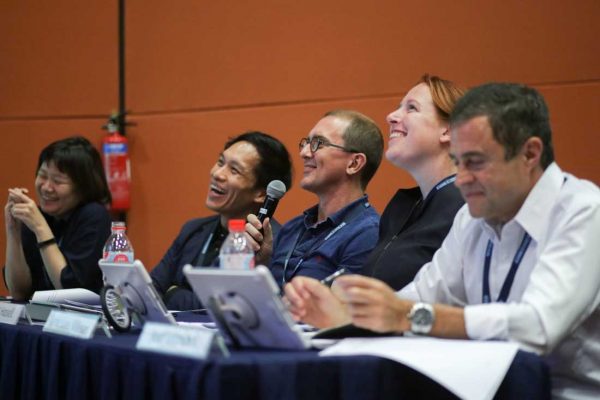
DRIA 2018 jurors at the judging session
The DRIA 2018 design competition’s jury included WOHA Founding Director Richard Hassell, World Bank’s Lead Disaster Risk Management Specialist Josef Leitmann, SHMA Architecture Co-Founder Yossapon Boonsom, KMUTT’s Chair of Graduate Program in Design and Planning Kanjanee Budthimedhee, and Defacto Architecture and Urbanism’s Founding Director Anne Loes Nillesen.
Each year the jury bestows a number of honourable mentions and three accolades for the best proposals: Architecture Design Excellence, Urban Design Excellence and the highest accolade, the Overall Design Excellence.
And this year’s winning proposals are:
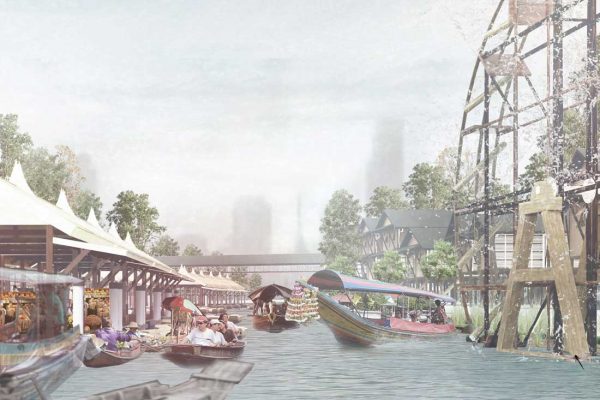
Liquid Bangkok offers a spatial approach centred on Bangkok’s blue system – its canals. The proposal aims to change Bangkokian’s perception of the city’s canals with participatory design workshops. The outcome of the intervention includes a floating market, incremental housing projects and sky bridges.
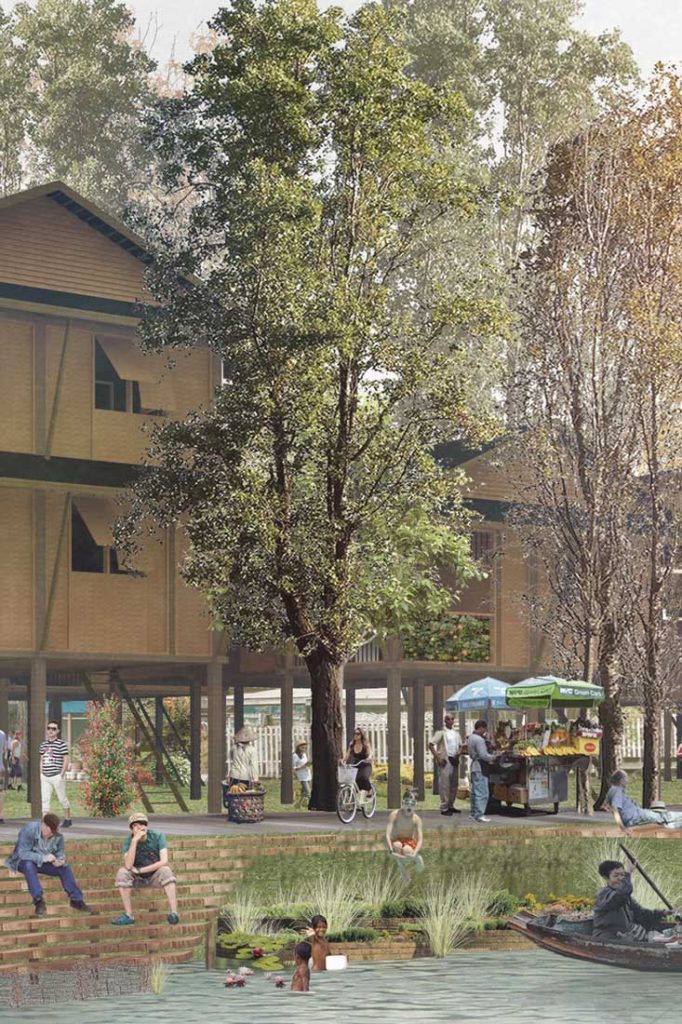
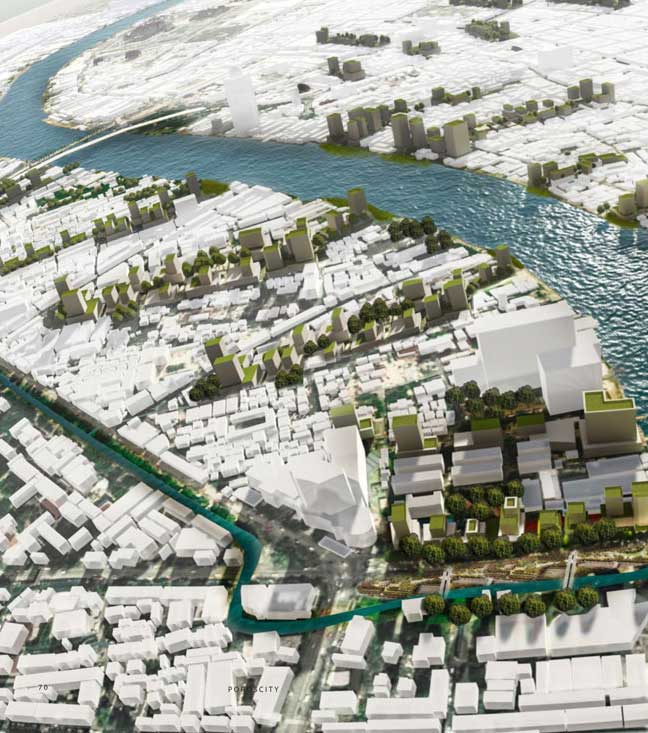
Poroscity sees Bangkok’s many soi (alleys) and khlong (canals) transformed into pedestrian-friendly thoroughfares fostering public interactions and economic activities which can passively help to reduce the impact of floods.
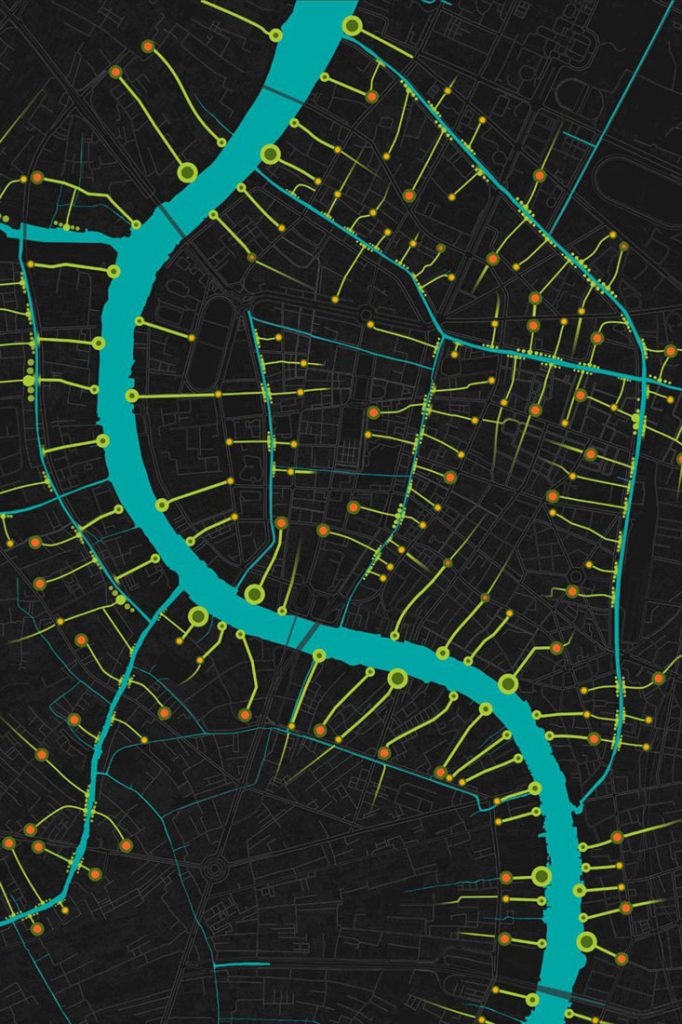
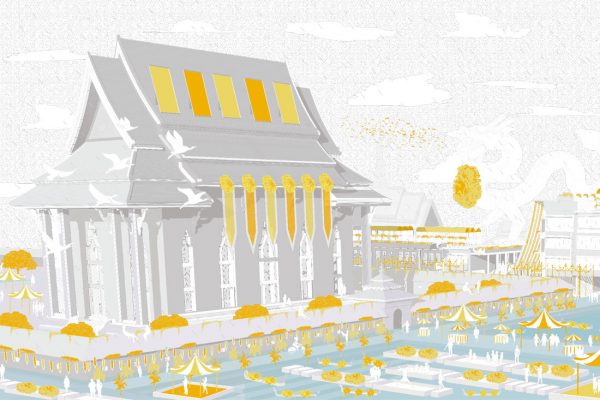
NCKU Team A likens the Chao Phraya River, its irrigation channels and canals as inflorescence (a group or cluster of flowers arranged on a stem that is composed of a branch or a complicated arrangement of branches), with the land as the blooming flower,
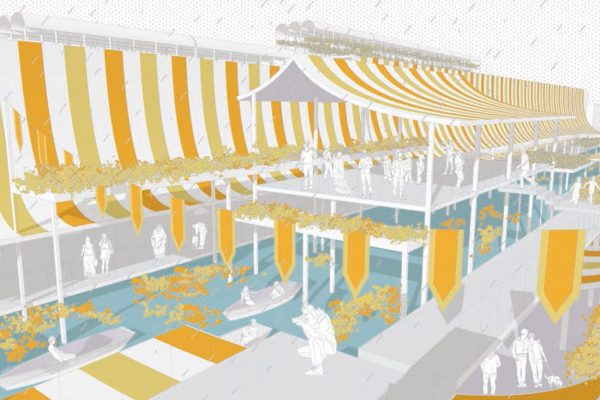
The Inflorescence proposal seeks to connect Bangkok’s two informal seasons: the festive flower season and the flooding season. The proposal imagines the river bank being converted into flower fields with a complex irrigation system that channels the heavy rainfall and minimises the threat of flood.
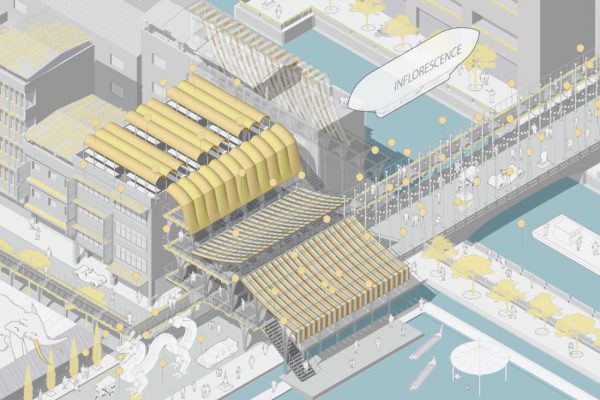
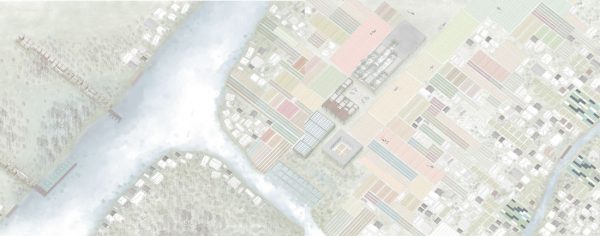
NCKU Team B takes an agricultural approach with Agri-Penetration. Centred around the effort to boost the value of the agricultural industry, the intervention offered by the proposal includes using the topography to irrigate new agricultural areas and packaging the whole process and experience for tourism.
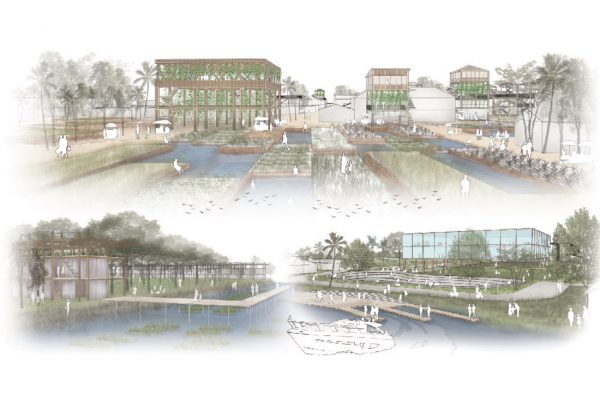
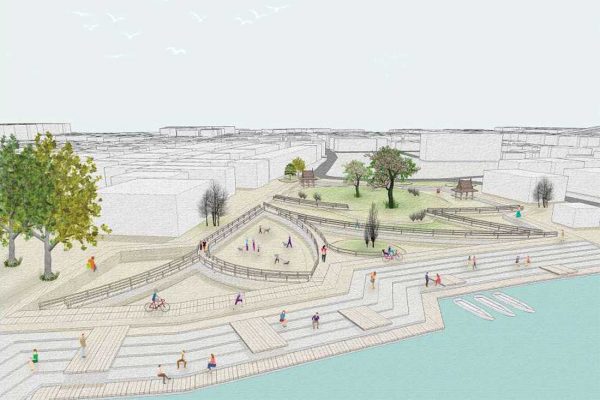
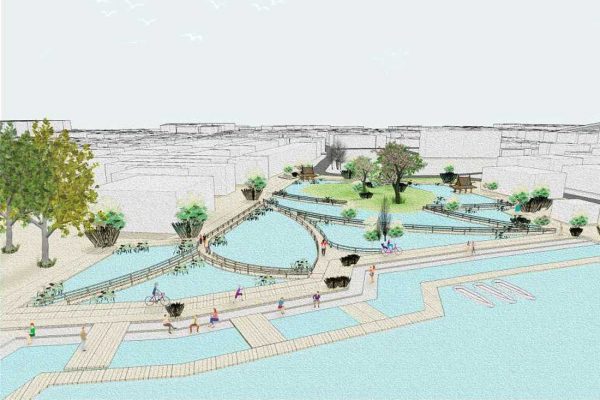
Praised by the jury as a delightful surprise, ITB Team B’s Wat.Er proposal places the site’s many Wat (temples) as the centre of the development. Wat.Er’s proposed intervention includes redeveloping the Wat in the Kadeejen Khlong San as a huge water reservoir and a shelter for people during a flood.
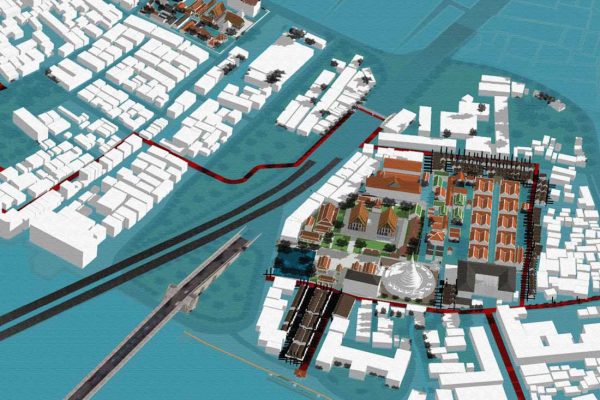
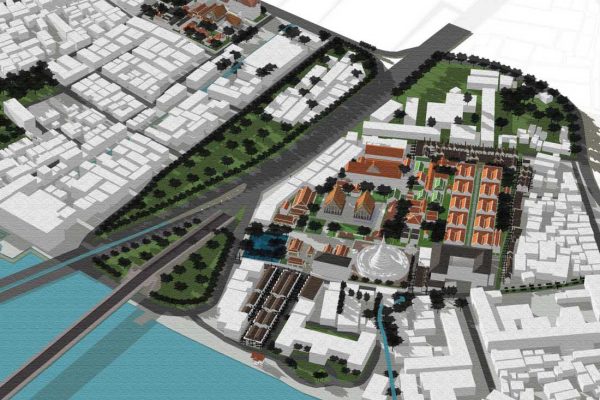
The proposal takes inspiration from the Buddhist’s tree of life (the Bodhi tree) concept and likens the site to a Bodhi tree and the Wat as the root that absorbs and store rainwater, gives the area its cultural character and revives the tourism.
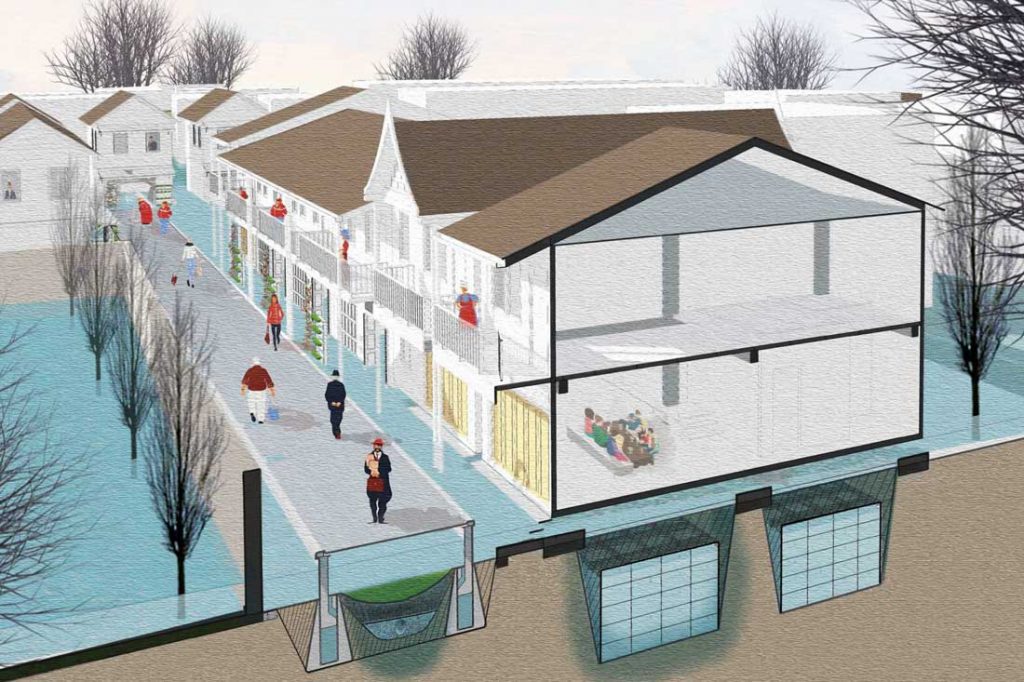
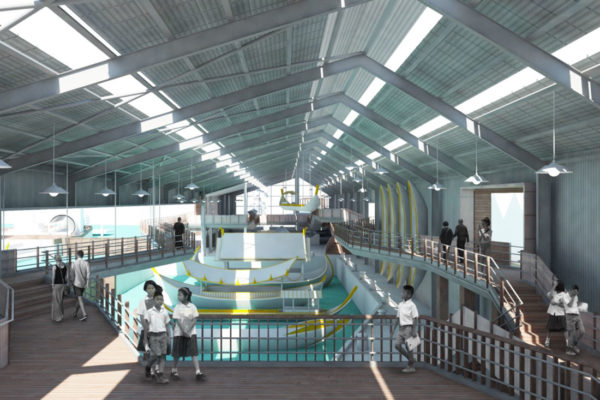
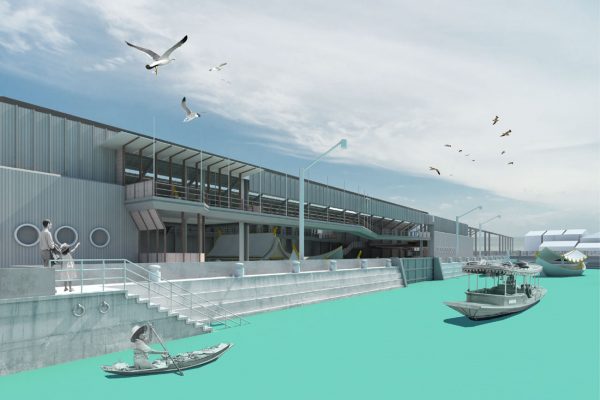
RMIT’s BKK River Link proposal identifies the key high priority community sites along Chao Phraya riverfront, links these sites to flood-resistant river docks via a raised walkway, and introduce multipurpose spaces that function as community hubs during flooding.
The ultimate aim is to re-condition the riverside urban fabric using the link as an armature and catalyst to stimulate and support new urban activities and connections.
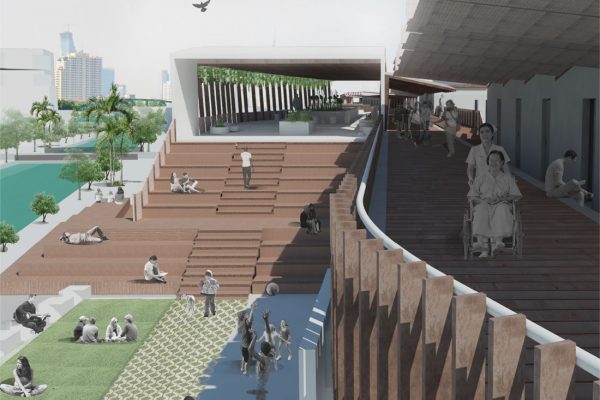
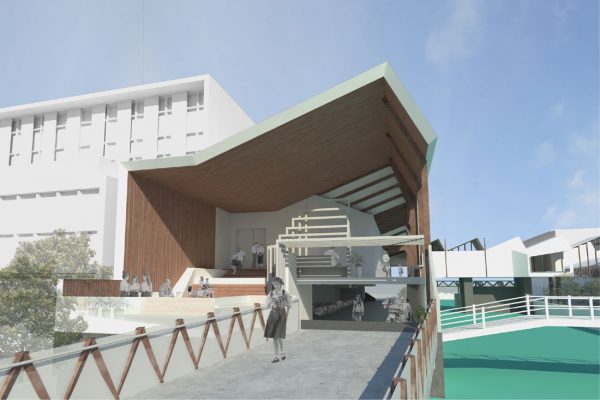
The BKK River Link addresses the flooding with four key actions: Bridging (connecting places and creates new relationships at different levels), shading (defining new public spaces and shared spaces for activities and economies to take place), Framing (reestablishing visual links and creating moments), and Landing (Incorporating infrastructure with a civic presence into existing streetscapes and urban fabric).
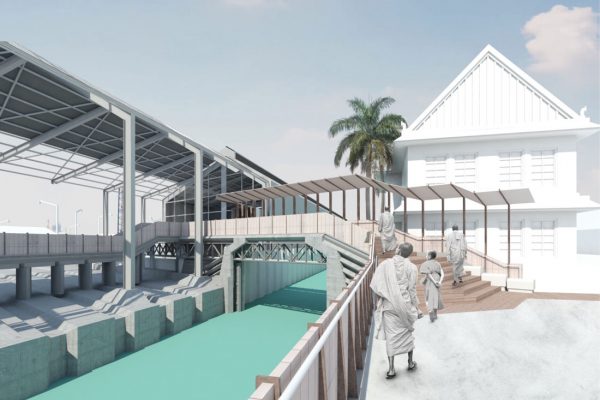
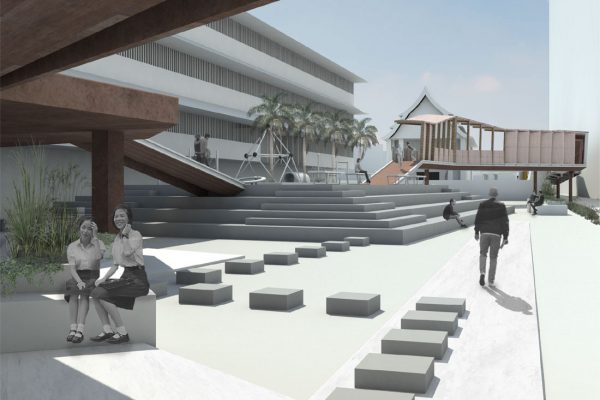
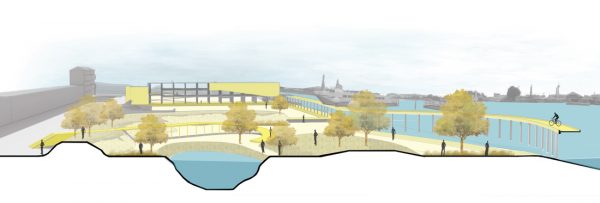
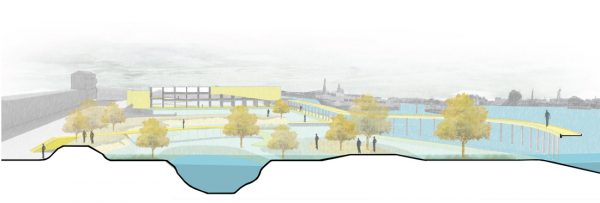
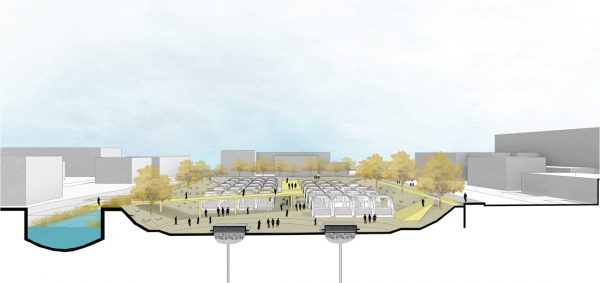
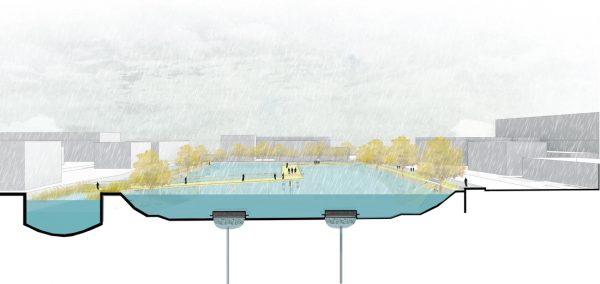
CEPT Team A’s proposal aims to rejuvenate the relationship between Bangkokians and its water by integrating water sensitive systems to public spaces with four strategies: Rejunevate, Soak, Protect and Adapt – each responds to different flood level.
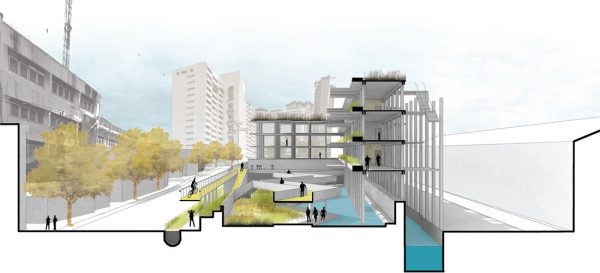
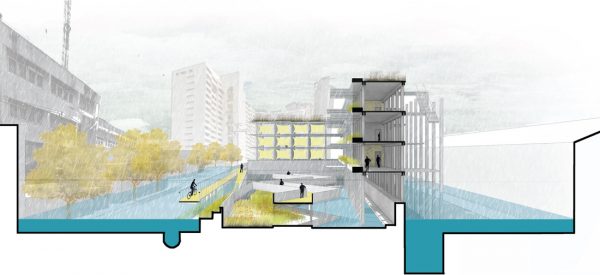
The proposal was praised for its comprehensive regional, city and local analysis of the issues and its “clearly structured toolbox of interventions”.
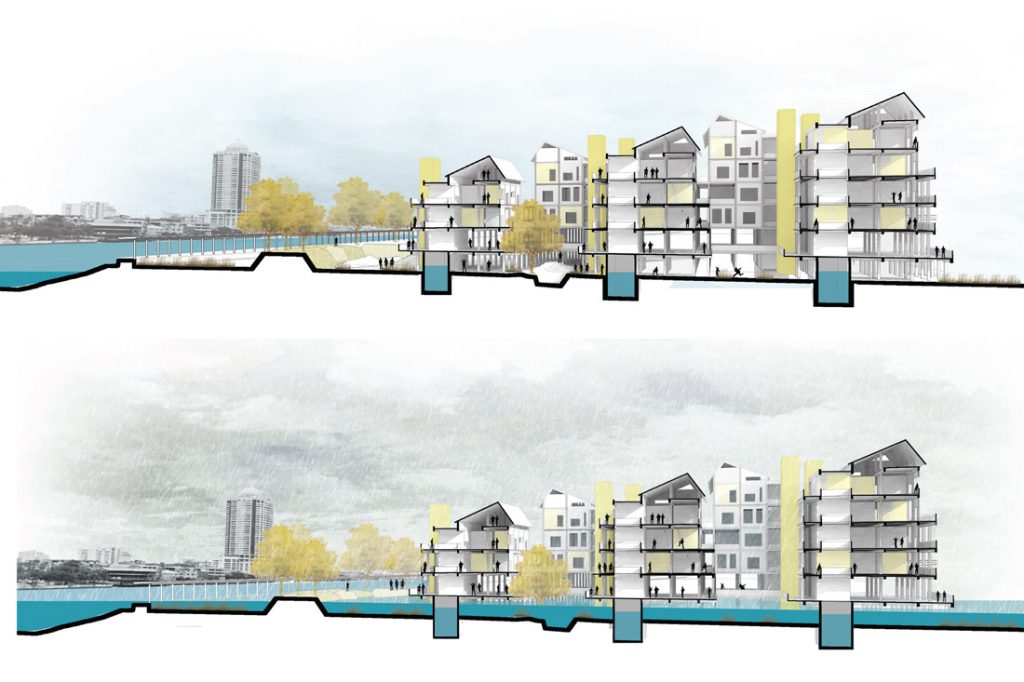
“The site is quite big, it’s seven-kilometre-long riverbanks, which is probably the biggest challenge the teams found. The students struggled to give solutions at such a large scale because architecture students are not used to doing that. But I think they did an extremely good job,” comments Prof. Oscar Carracedo Garcia-Villalba, Assistant Professor and Director of the DRIA International Research Programme.
He elaborates, “The capacity of these proposals to point out some of the main problems was quite diverse. Some teams focused on flooding, some on post-disaster solutions, some on preventative solutions, some on CO2 emissions, some on mobility. We had many diverse solutions because of this difficulty in trying to solve all the different dimensions of the site. I think this is the probably the most exciting outcomes of the competition.”
A searchable and comprehensive guide for specifying leading products and their suppliers
Keep up to date with the latest and greatest from our industry BFF's!

Channelling the enchanting ambience of the Caffè Greco in Rome, Budapest’s historic Gerbeaud, and Grossi Florentino in Melbourne, Ross Didier’s new collection evokes the designer’s affinity for café experience, while delivering refined seating for contemporary hospitality interiors.

Create a configuration to suit your needs with this curved collection.

Suitable for applications ranging from schools and retail outlets to computer rooms and X-ray suites, Palettone comes in two varieties and a choice of more than fifty colours.

Marylou Cafaro’s first trendjournal sparked a powerful, decades-long movement in joinery designs and finishes which eventually saw Australian design develop its independence and characteristic style. Now, polytec offers all-new insights into the future of Australian design.
The internet never sleeps! Here's the stuff you might have missed

Available now across Australia, Eden TPO is setting new standards in terms of not just sustainability, but also style.

Leading the field in terms of ergonomics, this high-end office furniture from Buro is also designed with the evolving needs of the modern workplace in mind.

A third in the series of boutique hotels under the Lloyd’s Inn brand, Lloyd’s Inn Kuala Lumpur bring the immediacy of nature to the new high-rise hospitality experience in the heart of a bustling city. “Lloyd’s Inn Kuala Lumpur is unique from the other properties in that it is a high-rise development, with more than […]